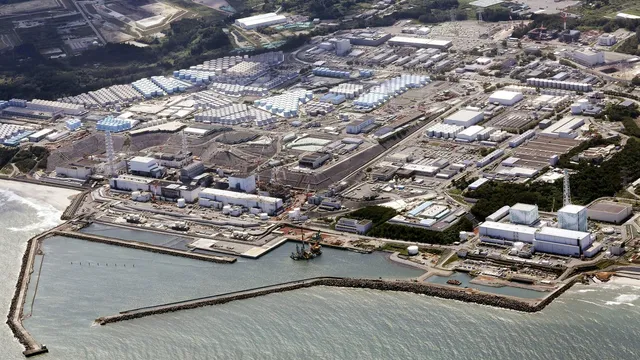
Robot embarks on crucial mission to recover nuclear debris in Fukushima
2025-04-15 14:20- The Telesco robot began its second mission on April 16, 2025, to retrieve melted fuel debris from the Fukushima plant.
- The mission follows the first successful debris retrieval in November 2023.
- The ultimate goal is to establish effective cleanup technology for the decommissioning of the Fukushima site over the coming decades.
Express your sentiment!
Insights
In Japan, a remote-controlled robot has started its second mission to retrieve tiny bits of melted fuel debris from within a reactor at the Fukushima nuclear plant. The plant had been damaged by a tsunami and earthquake in March 2011, leading to a critical nuclear disaster. On April 16, 2025, Tokyo Electric Power Company confirmed that the extendable Telesco robot entered the No. 2 reactor's primary containment vessel to extract samples from previously unreached areas. This mission follows the initial retrieval effort in November 2023, aimed at gathering vital information crucial for the ongoing decommissioning process. The mission is part of an extensive cleanup operation projected to last decades as the plant contains approximately 880 tons of melted nuclear fuel mixed with structural debris. The successful recovery of debris is expected to enhance the technology necessary for large-scale cleanup efforts in the future. In a steady process with careful planning, robotics technology is being leveraged to navigate the difficult and hazardous environment of the damaged reactors where human intervention poses significant risks. This essential work is not merely an immediate response; it serves as an integral component of a larger approach to managing the catastrophic aftermath of the 2011 disaster. Following the series of missions conducted by robots to collect samples, experts will use the gathered data to strategize a method for a broader removal of the melted fuel, starting with the No. 3 reactor in the 2030s. Each advancement in robotic capabilities brings the cleanup process closer to achieving long-term safety measures for the surrounding environment and community. While the retrieval efforts have experienced some mishaps, the initial success in November marked a significant milestone within the operational framework of the decommissioning process. The ongoing challenges continue to necessitate innovative approaches as the teams work toward restoring safety and eventually dismantling the nuclear site. As robotic technology evolves, it will likely revolutionize not just Fukushima’s cleanup but enhance future strategies for handling nuclear crises around the globe.
Contexts
The Fukushima nuclear plant cleanup is an ongoing process that commenced following the catastrophic events of March 2011, when a major earthquake and tsunami triggered meltdowns at the plant. This incident resulted in significant radiation release and contamination of the surrounding environment, prompting an extensive and multi-faceted cleanup operation. The Japanese government and the Tokyo Electric Power Company (TEPCO) established both short-term and long-term plans to manage the decommissioning of the facility, focusing on the containment of radioactive materials, removal of spent fuel, and remediation of the affected areas. As of now, their efforts have involved extensive efforts in waste management, decontamination of land, and the construction of safe storage facilities for radioactive waste. One of the notable accomplishments in the cleanup process has been the successful removal of spent nuclear fuel from the storage pools. TEPCO began this daunting task in 2017, and as of April 2025, has made significant strides in ensuring the safety of the removed fuel. Moreover, the development of a comprehensive cooling system to manage the ongoing challenges posed by the melted nuclear cores remains a critical focus area. Although progress has been made, key challenges persist, particularly concerning groundwater contamination and radioactive water storage. Efforts are underway to create an effective treatment system to limit the release of contaminated water into the environment. In addition to the physical cleanup, there are considerable social and economic aspects that have influenced the cleanup timeline. The Fukushima disaster resulted in the evacuation of thousands of residents and has raised concerns over the long-term viability of the affected areas. TEPCO and government officials are working to establish plans for resettlement, which involves decontaminating residential spaces and addressing health concerns. The complexity of these social dimensions complicates the cleanup operations, as the residents have varying expectations and apprehensions about returning home, compounded by psychological impacts and trust in government assurances. Overall, while substantial progress has been made in the Fukushima nuclear plant cleanup, the operation remains incomplete, with estimated timelines for full decommissioning stretching out over the next few decades. As of 2025, continuous monitoring of environmental impacts, advancements in technology for waste management, and engagement with the local communities are essential for both restoring the affected areas and ensuring the safety of future generations. The lessons learned from Fukushima have not only shaped Japan's nuclear policies but have also influenced global conversations regarding nuclear safety and disaster preparedness.